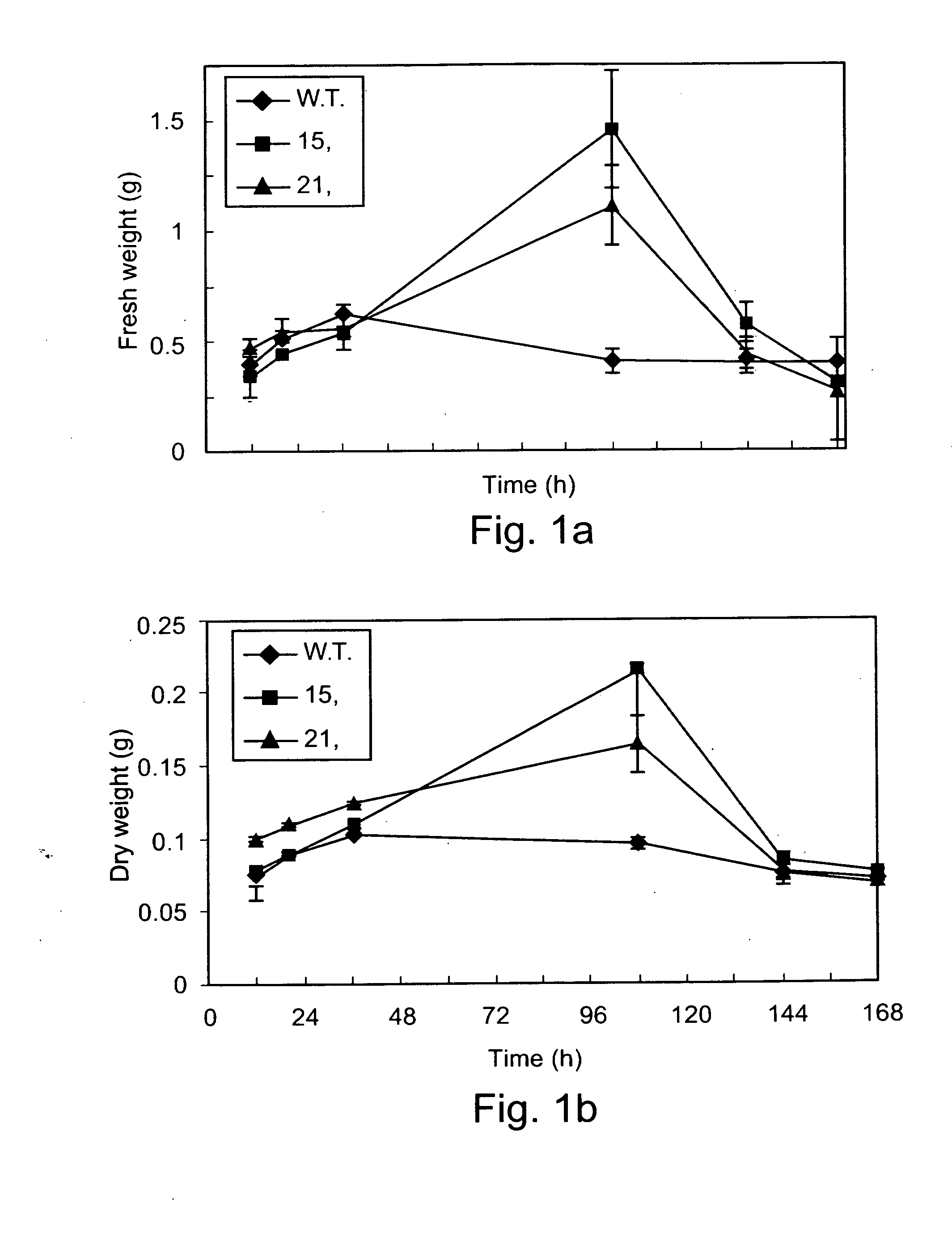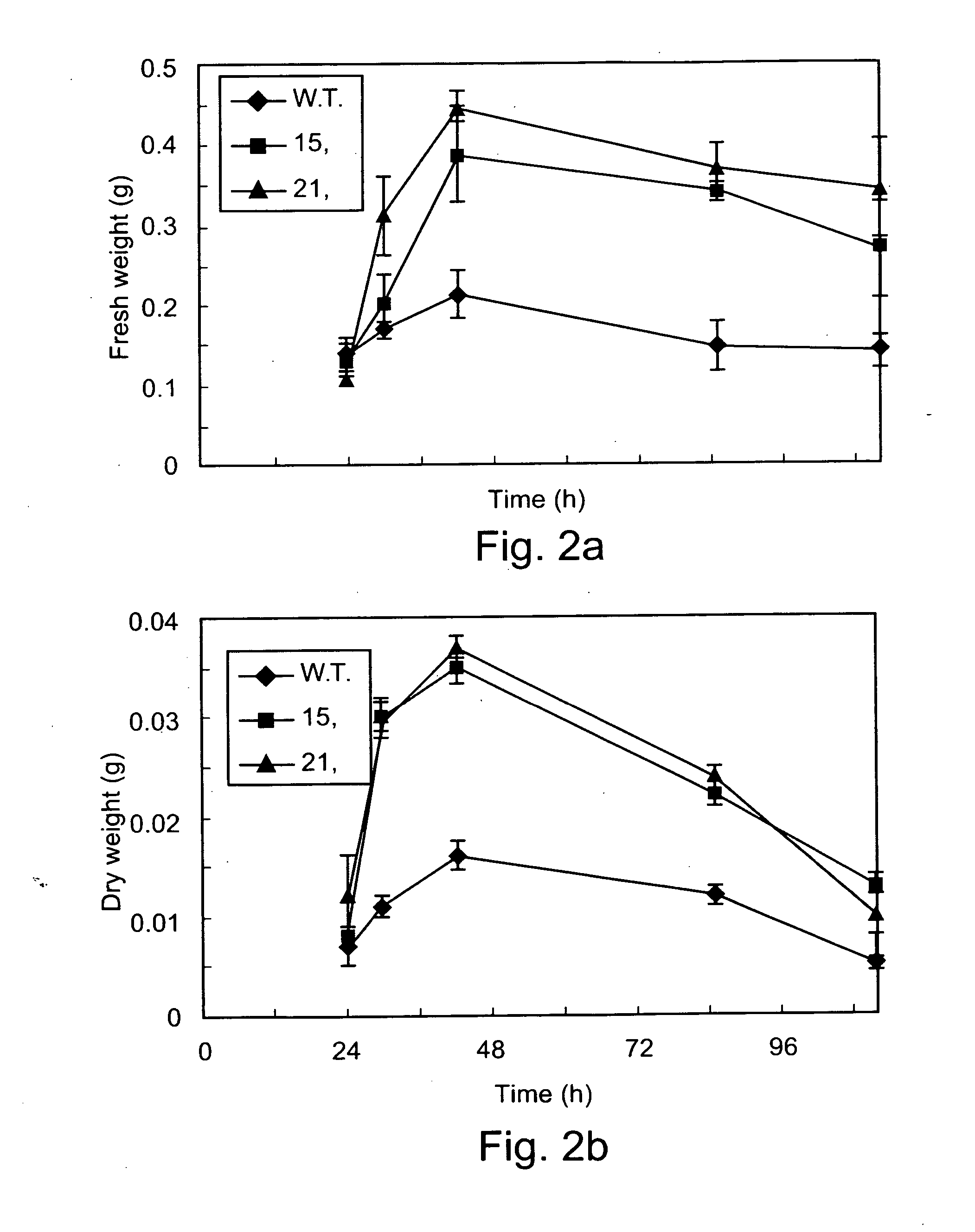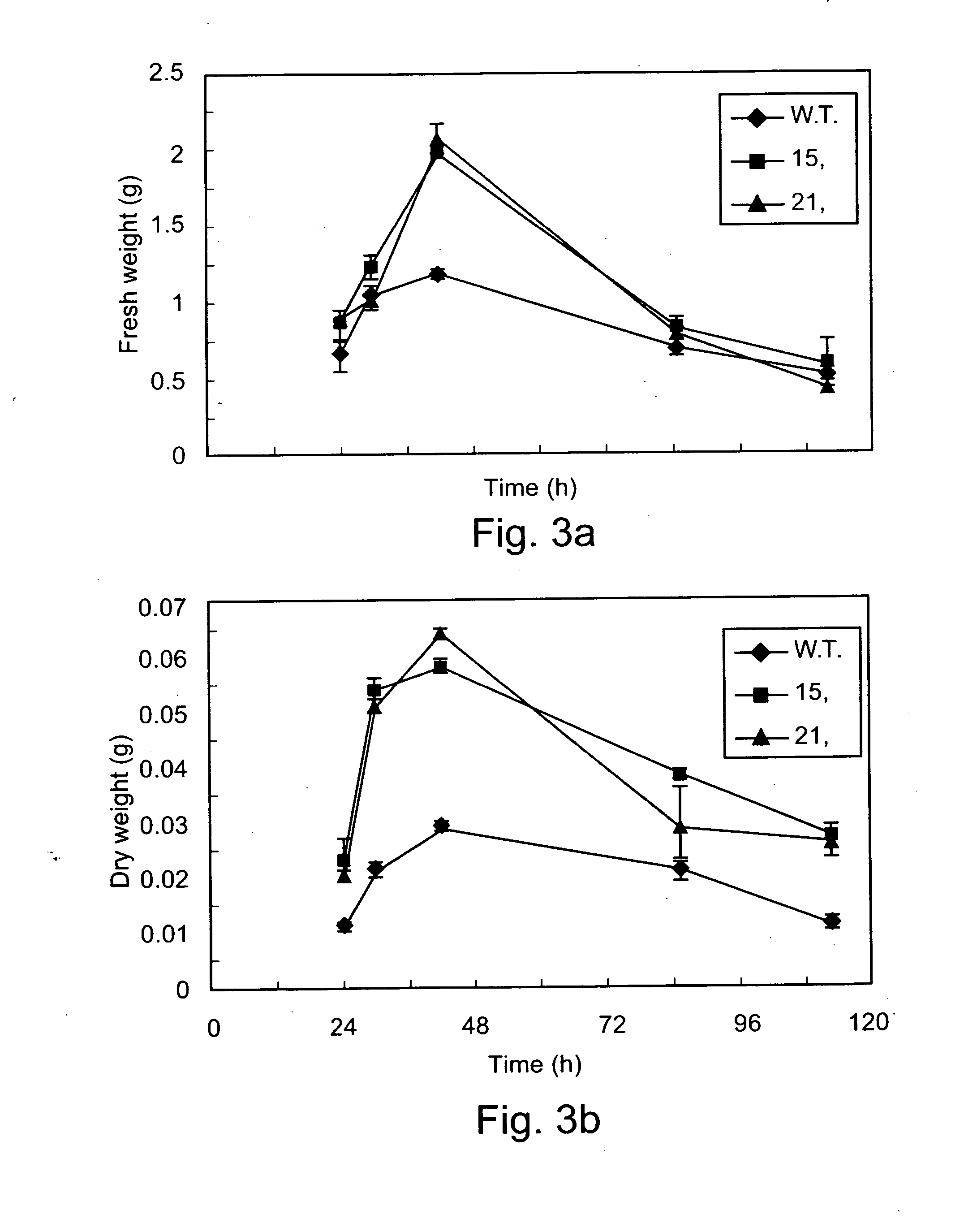Transgenic fungi expressing Bcl-2 and methods of using Bcl-2 or portions thereof for improving biomass production, survival, longevity and stress resistance of fungi
a technology of transgenic fungi and bcl-2, which is applied in the field of enhancing growth of fungi, can solve the problems of difficult selection of spores, and large number of spores, and achieves the effect of accelerating growth
- Summary
- Abstract
- Description
- Claims
- Application Information
AI Technical Summary
Benefits of technology
Problems solved by technology
Method used
Image
Examples
examples
[0148] Reference is now made to the following examples, which together with the above descriptions, illustrate the invention in a non limiting fashion.
[0149] Generally, the nomenclature used herein and the laboratory procedures utilized in the present invention include molecular, biochemical, microbiological and recombinant DNA techniques. Such techniques are thoroughly explained in the literature. See, for example, “Molecular Cloning: A laboratory Manual” Sambrook et al., (1989); “Current Protocols in Molecular Biology” Volumes I-III Ausubel, R. M., ed. (1994); Ausubel et al., “Current Protocols in Molecular Biology”, John Wiley and Sons, Baltimore, Md. (1989); Perbal, “A Practical Guide to Molecular Cloning”, John Wiley & Sons, New York (1988); Watson et al., “Recombinant DNA”, Scientific American Books, New York; Birren et al. (eds) “Genome Analysis: A Laboratory Manual Series”, Vols. 1-4, Cold Spring Harbor Laboratory Press, New York (1998); methodologies as set forth in U.S. P...
example i
[0156] Bcl-2 expression enhances growth rate and biomass production in liquid culture. To test the effect of expression of the antiapoptosis protein Bcl-2 on growth, the fresh and dry weights of Bcl-2-transgenic isolates were compared with those of wild type during the first 7 days after inoculating 10 ml of media with 1×107 conidia. The transgenic isolates developed more mycelium and continued to accumulate biomass for a significantly longer period of time than the wild type strain in all three media that have been tested (FIGS. 1-3). Differences in growth kinetics were observed in the different media. For example, in REG medium there was no difference between the wild type and the Bcl-2 isolates until 36 hours (FIG. 1). After 36 hours the wild type ceased accumulating biomass, while the Bcl-2 isolates continued to accumulate biomass, reaching a maximum at 108 hours, before beginning to decline. At 144 hours, the biomass of the Bcl-2 cultures, measured as fresh and dry weight, were...
example ii
[0157] Bcl-2 expression enhances sporeproduction. To test the effect of expression of human Bcl-2 on spore production, isolates were grown on solid media (either REG or EMS), colony diameter and the number of conidia produced at 4, 5, and 7 days were recorded and the number of conidia per cm2 was calculated. Most significantly, expression of Bcl-2 in the transgenic isolates resulted in early production of large amounts of conidia. When grown in REG, a medium that normally promotes mycelial development, the Bcl-2 isolates achieved nearly 10 times wild type conidia production after 4 or 5 days (2.4×106 conidia / cm2 at 4 days after inoculation of the colony for Bcl-2 isolates compared to only 2.8×105 conidia / cm2 at 4 and 5 days for wild type isolates), and reached a maximum of 3.5×106 conidia / cm2 after 7 days (FIG. 4). At 7 days post inoculation, conidia production was similar for both wild type and transgenic isolates. When grown in EMS medium, a similar but less striking advantage in ...
PUM
| Property | Measurement | Unit |
|---|---|---|
| temperature | aaaaa | aaaaa |
| sub-optimal temperature | aaaaa | aaaaa |
| temperature | aaaaa | aaaaa |
Abstract
Description
Claims
Application Information
 Login to View More
Login to View More - R&D
- Intellectual Property
- Life Sciences
- Materials
- Tech Scout
- Unparalleled Data Quality
- Higher Quality Content
- 60% Fewer Hallucinations
Browse by: Latest US Patents, China's latest patents, Technical Efficacy Thesaurus, Application Domain, Technology Topic, Popular Technical Reports.
© 2025 PatSnap. All rights reserved.Legal|Privacy policy|Modern Slavery Act Transparency Statement|Sitemap|About US| Contact US: help@patsnap.com



